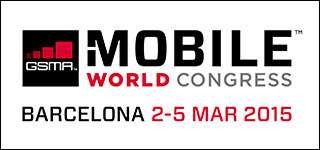GSM frequency bands
GSM frequency bands or frequency ranges are the cellular frequencies designated by the ITU for the operation of GSM mobile phones.
Frequency bands
There are fourteen bands defined in 3GPP TS 45.005, which succeeded 3GPP TS 05.05:
GSM frequency usage around the world
A dual-band 900/1800 phone is required to be compatible with most networks apart from deployments in ITU-Region 2.
GSM-900, EGSM/EGSM-900 and GSM-1800
GSM-900 and GSM-1800 are used in most parts of the world (ITU-Regions 1 and 3): Africa, Europe, Middle East, Asia (apart from Japan and South Korea where GSM has never been introduced) and Oceania.

GSM
GSM (Global System for Mobile Communications, originally Groupe Spécial Mobile), is a standard developed by the European Telecommunications Standards Institute (ETSI) to describe the protocols for second-generation (2G) digital cellular networks used by mobile phones, first deployed in Finland in July 1991.As of 2014 it has become the default global standard for mobile communications - with over 90% market share, operating in over 219 countries and territories.
2G networks developed as a replacement for first generation (1G) analog cellular networks, and the GSM standard originally described a digital, circuit-switched network optimized for full duplex voice telephony. This expanded over time to include data communications, first by circuit-switched transport, then by packet data transport via GPRS (General Packet Radio Services) and EDGE (Enhanced Data rates for GSM Evolution or EGPRS).
Subsequently, the 3GPP developed third-generation (3G) UMTS standards followed by fourth-generation (4G) LTE Advanced standards, which do not form part of the ETSI GSM standard.

Mobile World Congress
The GSMA Mobile World Congress is a combination of the world's largest exhibition for the mobile industry and a conference featuring prominent executives representing mobile operators, device manufacturers, technology providers, vendors and content owners from across the world. The event, initially named as GSM World Congress and later renamed as the 3GSM World Congress, is still often referred to as 3GSM or 3GSM World.
In 2014 the GSMA announced that their annual summer event in China was being rebranded under the Mobile World Congress banner as "Mobile World Congress Shanghai". The event took place 15–17 July 2015 in Shanghai, China, at the Shanghai New International Exhibition Centre. 2016 event will take place in Barcelona from 22 to 25 February.
Further info
The GSMA Mobile World Congress usually takes place in February but occasionally the show occurs the first week of March. The location is the Fira Gran Via venue in Barcelona, Catalonia, Spain. Annual attendance is generally between 80,000-90,000 people. Up until 2006 the event took place in Cannes and was known as 3GSM World. Attendees represent more than 200 countries from across the globe.

Universal Mobile Telecommunications System
The Universal Mobile Telecommunications System (UMTS) is a third generation mobile cellular system for networks based on the GSM standard. Developed and maintained by the 3GPP (3rd Generation Partnership Project), UMTS is a component of the International Telecommunications Union IMT-2000 standard set and compares with the CDMA2000 standard set for networks based on the competing cdmaOne technology. UMTS uses wideband code division multiple access (W-CDMA) radio access technology to offer greater spectral efficiency and bandwidth to mobile network operators.
UMTS specifies a complete network system, which includes the radio access network (UMTS Terrestrial Radio Access Network, or UTRAN), the core network (Mobile Application Part, or MAP) and the authentication of users via SIM (subscriber identity module) cards.
The technology described in UMTS is sometimes also referred to as Freedom of Mobile Multimedia Access (FOMA) or 3GSM.
Unlike EDGE (IMT Single-Carrier, based on GSM) and CDMA2000 (IMT Multi-Carrier), UMTS requires new base stations and new frequency allocations.
Podcasts:

